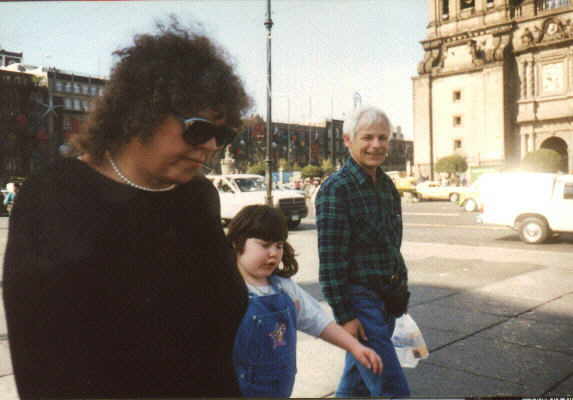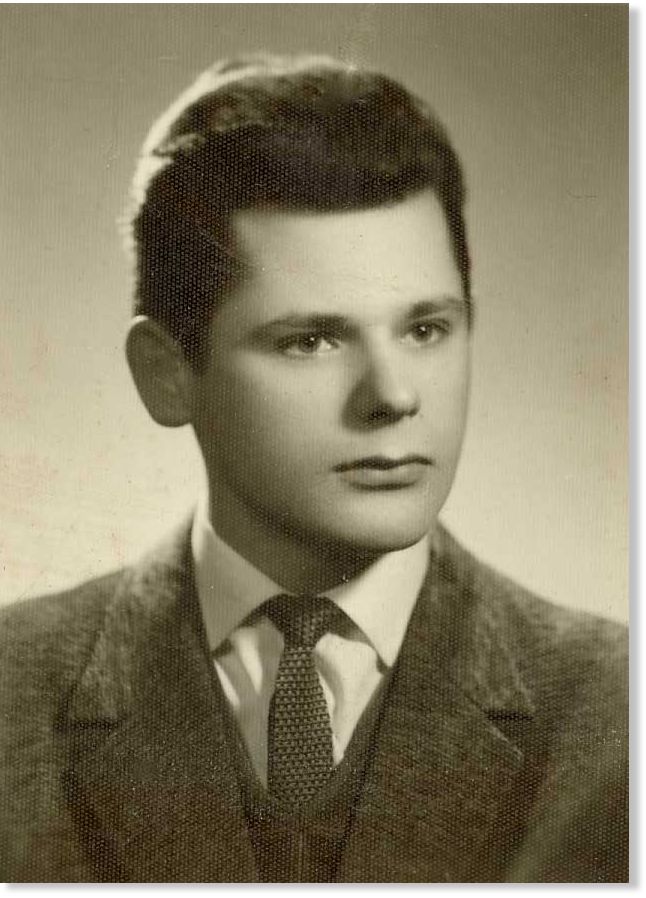There are several busts of Caesar. Unfortunately, many of them are highly idealized and made decades to centuries after his death.
Here's a list of some 20 well-known busts. They're used in a paper here, where the author uses software to 'age' the statues by twenty years. In other words, based on the sculpture, what would the subject have looked like 20 years later. You can see her results here: _http://arxiv.org/ftp/arxiv/papers/1304/1304.1972.pdf
01 - Arles discovered in September–October 2007 in the Rhone River near Arles, France.
02 – Marble, ca. 40 BC, Rome, Torlonia Museum.
03 - 1st quarter of the 1st century A.D., Corinth, Archaeological Museum.
04 – Marble, Age of August (27 BC — AD 14), Pisa, Campo Santo.
05 - White marble, late 1st — early 2nd century AD, Turin, Museum of Antiquities.
06 - White marble, Woburn Abbey.
07 - Farnese head of Julius Caesar from the Trajan’s forum, marble, AD 117—138, Naples, National Archaeological Museum. [Based on the Tusculum]
08 - Age of Julii-Claudii, white marble, Munich, Residenz.
09 - Farnese head, time of Trajan, Naples, National Archaeological Museum.
10 - Julian-Claudian copy of the portrait of the 1st century BC, Rome, Vatican Museums.
11 - White marble, Vienna, Museum of Art History.
12 - White marble, time of Trajan, Parma, National Museum of Antiquities.
13 - Fragment of the statue, Rome, Capitoline Museums.
14 – Marble, Age of August, Rome, Vatican Museums.
15 - White marble, time of Augustus, Rome, Vatican Museums.
16 - White marble, Time of Augustus, Rome, Vatican Museums.
17 - Found in Pantelleria (Sicily), 2006, dated to the middle of the first century CE.
18 - The Tusculum bust, fine-grained white marble, 45—43 BC, Turin, Museum of Antiquities.
19 - Plaster cast from the portrait head of Julius Caesar in the Museum of Antiquities, Turin.
20 - Private collection, Rome
But there's this to keep in mind: _http://100falcons.wordpress.com/2008/05/19/what-did-caesar-look-like/
Personally, I think the Arles looks pretty similar to the Tusculum. Here they are close together:
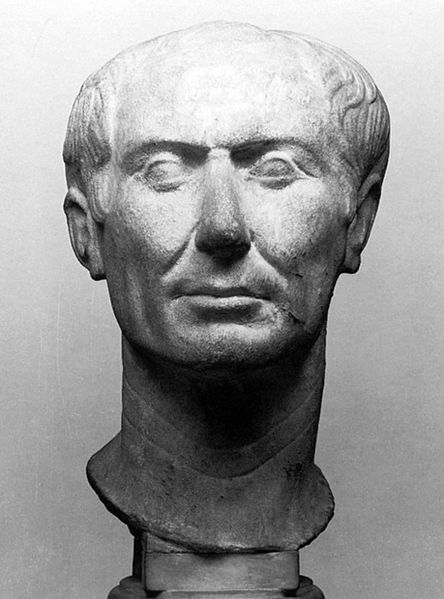

The Arles has a wider nose, but several features are similar: neck lines, chin, lips, crows feet, eyebrows, eye lids, nose ridge between eyes, head shape, receding hairline.
Another bust was discovered in 2003: _http://www.cronaca.com/archives/001481.html
Here's the bust in question: _http://flickr.com/photos/78147607@N00/490890040/
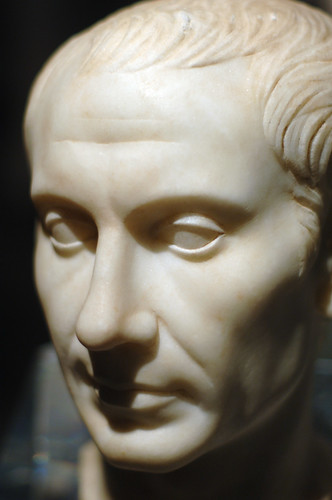
And another angle:
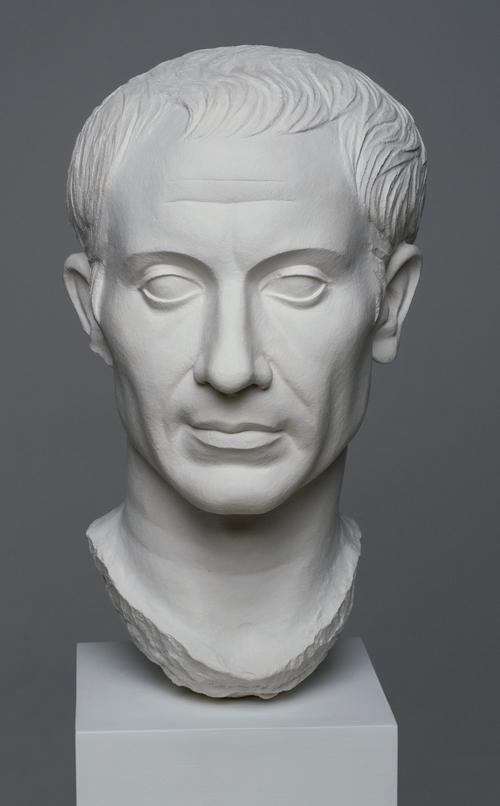
And finally, here's the Torlonia, which Carotta calls Caesar's pieta. He thinks it may have been based on Caesar's death mask, and points out that it is probably posthumous, given the generous hair.
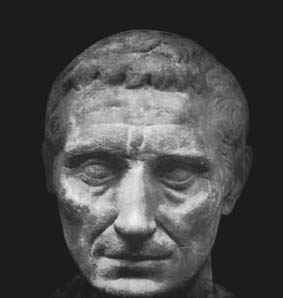
Added: Here's a History Channel video on a 3D reconstruction they did based on the Tusculum:
_http://www.youtube.com/watch?v=3I8IZ2JMG7s
Here's a list of some 20 well-known busts. They're used in a paper here, where the author uses software to 'age' the statues by twenty years. In other words, based on the sculpture, what would the subject have looked like 20 years later. You can see her results here: _http://arxiv.org/ftp/arxiv/papers/1304/1304.1972.pdf
01 - Arles discovered in September–October 2007 in the Rhone River near Arles, France.
02 – Marble, ca. 40 BC, Rome, Torlonia Museum.
03 - 1st quarter of the 1st century A.D., Corinth, Archaeological Museum.
04 – Marble, Age of August (27 BC — AD 14), Pisa, Campo Santo.
05 - White marble, late 1st — early 2nd century AD, Turin, Museum of Antiquities.
06 - White marble, Woburn Abbey.
07 - Farnese head of Julius Caesar from the Trajan’s forum, marble, AD 117—138, Naples, National Archaeological Museum. [Based on the Tusculum]
08 - Age of Julii-Claudii, white marble, Munich, Residenz.
09 - Farnese head, time of Trajan, Naples, National Archaeological Museum.
10 - Julian-Claudian copy of the portrait of the 1st century BC, Rome, Vatican Museums.
11 - White marble, Vienna, Museum of Art History.
12 - White marble, time of Trajan, Parma, National Museum of Antiquities.
13 - Fragment of the statue, Rome, Capitoline Museums.
14 – Marble, Age of August, Rome, Vatican Museums.
15 - White marble, time of Augustus, Rome, Vatican Museums.
16 - White marble, Time of Augustus, Rome, Vatican Museums.
17 - Found in Pantelleria (Sicily), 2006, dated to the middle of the first century CE.
18 - The Tusculum bust, fine-grained white marble, 45—43 BC, Turin, Museum of Antiquities.
19 - Plaster cast from the portrait head of Julius Caesar in the Museum of Antiquities, Turin.
20 - Private collection, Rome
But there's this to keep in mind: _http://100falcons.wordpress.com/2008/05/19/what-did-caesar-look-like/
This portrait bust of Julius Caesar has been found at the bottom of the Rhone River at Arles, France.
Photo from the CBC NEWS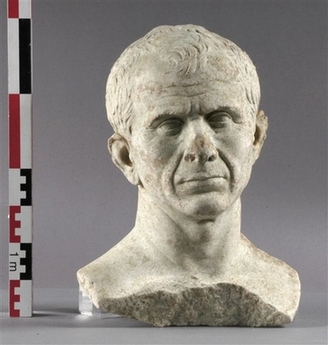
Archaeologists believe it was sculpted while he was still alive, perhaps two years before his assassination. Since it is clearly not an idealized portrait but a study from life, the bust shows what Caesar really looked like.
Marble bust of Caesar discovered in 2007 in the Rhone River near Arles, France. (Creative Commons Attribution-Share Alike 3.0 Unported, 2.5 Generic, 2.0 Generic and 1.0 Generic license photo by Mcleclat)
It has forced many to re-consider their hero.
“He doesn’t look like the kind of guy who would let himself get assassinated or worry about adjusting his garments in death,” said one scholar. “This Caesar image has close-set eyes and a pugilistic face, possibly affected by the bust’s damaged nose. Not the smooth intellectual face of someone who was famous for using clemency toward his defeated enemies as a political tool.”
Yet others see the portrait as a fine illustration (nature’s) of the general who conquered Gaul, created a Civil War, and became Dictator. He was no romantic. Clemency was a political tool and there were times when he opted for others (a club). Read Suetonius and see how brutal he could be. {AI: Couldn't resist, could they?}
Experts like Mary Beard and Paul Zanker doubt that this Arles bust represents Julius Caesar. See this article.
All the extant portraits but one were known to have been carved after Caesar’s death and were therefore artists’ inventions.
A favorite one has always been this noble head in the Vatican Museum.
Bust of Caesar in the Vatican Collection (public domain photo)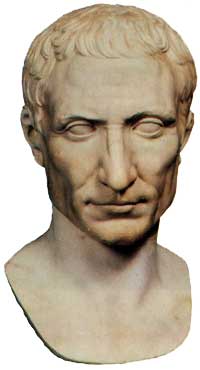
An engraving of its profile was used as a frontispiece for James Anthony Froude’s famous Victorian biography. He admires Caesar no end and denies or justifies and forgives all the evil deeds Suetonius and others record. In his last chapter Froude even compares him to Jesus Christ. Froude saw all his hero’s almost supernatural virtues reflected in this Vatican Museum portrait.
Frontispiece of Froude’s Caesar: A Sketch (file photo)
The one bust that was known to have been carved in Caesar’s lifetime has usually been ignored. It is so realistic it seems crude. It shows too definite a man and one who does not seem to embody all those mythical qualities of the hero, at least the likeable ones. Its profile is slightly more satisfying.
Tusculum portrait of Caesar (public domain photo by Tataryn77)
..Tusculum bust, profile (file photo)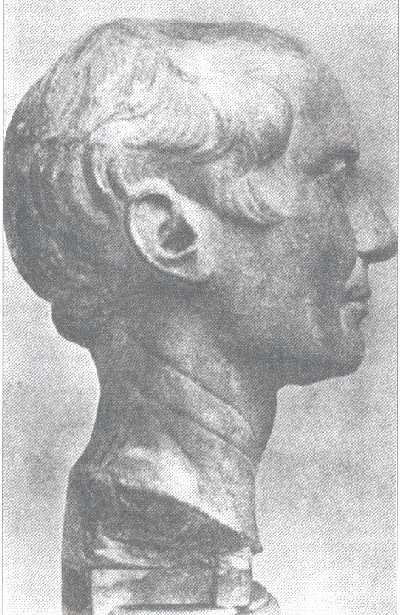
This is a coin minted during Caesar’s brief period as dictator. ( file photo)In common with nearly all the other portraits, it shows his long, thin neck with deep parallel furrows, perhaps scars of some kind. The large eyes must be only an artistic device.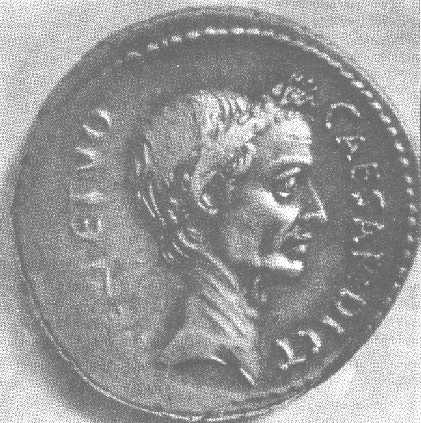
Another coin minted while Caesar was alive, February-March 44 BC. (Commons Attribution-Share Alike 3.0 Unported license photo by Classical Numismatic Group, Inc. )
See also this bust of Caesar in the Archaeological Museum of Palermo. Some believe it was based on a death mask. There are two views at Jona Lendering’s page on Caesar. Scroll down the page and click on Caesar’s Funeral Mask.
Personally, I think the Arles looks pretty similar to the Tusculum. Here they are close together:


The Arles has a wider nose, but several features are similar: neck lines, chin, lips, crows feet, eyebrows, eye lids, nose ridge between eyes, head shape, receding hairline.
Another bust was discovered in 2003: _http://www.cronaca.com/archives/001481.html
The face of Julius Caesar has surfaced after 2,000 years. A perfectly preserved white marble bust found on a tiny volcanic Mediterranean island has been described as putting the Roman emperor in a new light.
Archaeologists say that the figure is more pristine than the five other contemporary marble busts of Caesar known to exist.
Thomas Schaefer, an archaeology professor at Germany's Tubingen University, who led the dig, said: 'It is in superb condition and puts the most famous figure in Ancient Rome in a new light.'
The bust was found by archaeology students at the bottom of an underground cistern dug into rock on the island of Pantelleria, which lies between Sicily and the North African coast . . .
Professor Schaefer said that there was 'absolutely no question that this is Julius Caesar himself. We have compared the bust to the few others of Caesar that exist, and the features are the same'. He said that he believed the unknown woman was probably Antonia the Younger, the mother of the Emperor Claudius.
Professor Andrew Wallace-Hadrill, director of the British School at Rome and a leading classical scholar, said the fact that there were 'only a handful' of authenticated portraits of Caesar made the find exceptional.
Here's the bust in question: _http://flickr.com/photos/78147607@N00/490890040/

And another angle:

And finally, here's the Torlonia, which Carotta calls Caesar's pieta. He thinks it may have been based on Caesar's death mask, and points out that it is probably posthumous, given the generous hair.

Added: Here's a History Channel video on a 3D reconstruction they did based on the Tusculum:
_http://www.youtube.com/watch?v=3I8IZ2JMG7s




